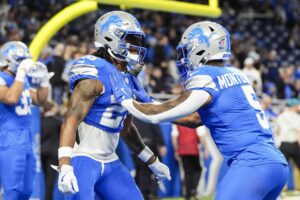To conclude the NFC North’s part in our newest series, “The Breakdown,” we take a look at the Green Bay Packers schematic philosophy. With one of the game’s top quarterbacks in Aaron Rodgers, the Packers are perennial playoff visitors and remain a viable threat to compete for the Super Bowl. There are defensive improvements to be made, but Rodgers has sufficiently managed to shoulder the burden and keep Green Bay in contention.
The Breakdown: A Look at the Green Bay Packers Schematic Philosophy
Spreading the Defense
The Packers are undeniably reliant on four and five-receiver sets that spread the defense out, providing Rodgers ample room to ad-lib when necessary, widen throwing lanes and simplify full-field progressions. However, their underlying issue stems from the high amount of isolation routes their passing game is built on, an efficient practice that doesn’t support the spread-out passing game they believe in if your receivers can’t defeat man coverage. Thus, the use of connected route concepts, pre-snap motion and stack-releases would prove to be increasingly beneficial.
With Ty Montgomery handling the running back duties, the Packers have established a strong perimeter run game that highlights his strengths as a speedy and agile runner. Head coach Mike McCarthy has implemented run-pass options (RPOs) to act as extensions of the run game, while the art of running the ball out of the aforementioned wide sets creates lighter boxes to attack and helps blend the personnel looks from both passing and running the ball. Further, Green Bay doesn’t shy away from utilizing a tight end as a fourth or fifth receiver (hence the move to get Martellus Bennett) which means defenses are advised not to shift to heavy looks when they get an in-line tight end or two. It’s a typical run look, but the Packers could very well send them into routes.
Defensive Continuity
The name Dom Capers has become synonymous with NFL defense and he enters his ninth season as the Packers’ defensive coordinator. While teams have had chances to recognize his tendencies, Capers has yet to tip his hand, such is the result of variety. Capers incorporates a multitude of different pressure packages, coverage concepts and personnel packages that match the looks that offenses attempt to throw at his defense.
This variety carries over into his fronts that rotate between a 3-4 and 4-3 and will even shift to a 2-4 in his nickel packages. The down line group of Kenny Clark, Mike Daniels and Dean Lowry is young and improving which would allow Capers to remain efficient with his rotations. He has full confidence in his defensive backs-perhaps to his detriment at times in 2016-as he will call a bevy of secondary blitzes and coverage rotations with the appropriate intertwined blitzes. Capers is also not shy about utilizing his nickel packages. Hence, it should come as no surprise to see Green Bay go defensive back with their first two picks, selecting corner Kevin King and safety Josh Jones in the second round. His pressure defense only works if his secondary plays sound football.
Green Bay remains the team to beat in the NFC North and should challenge, yet again, for a first-round bye. Rodgers is an MVP-caliber player with a continually improving running back and a defense that appears primed for an effective season, so don’t expect much of a regression from the Packers.






